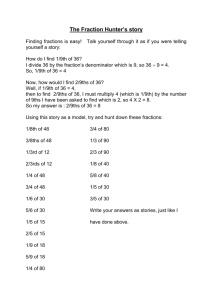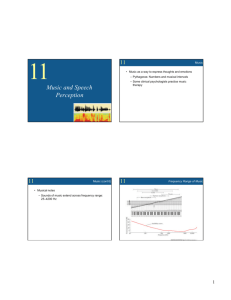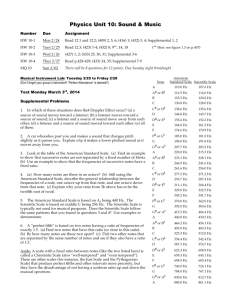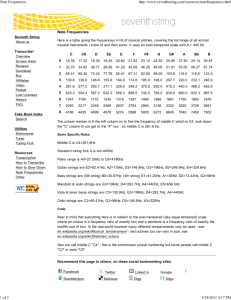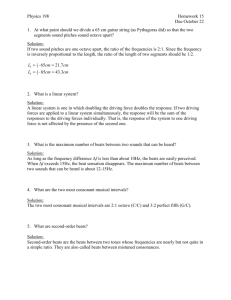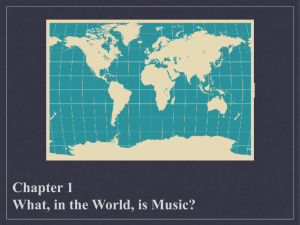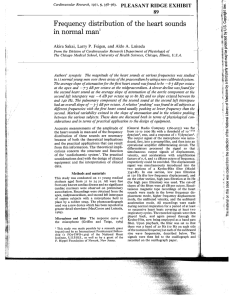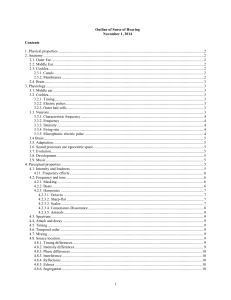Oh, Oh, Ooohhh, ....listen to the music
advertisement
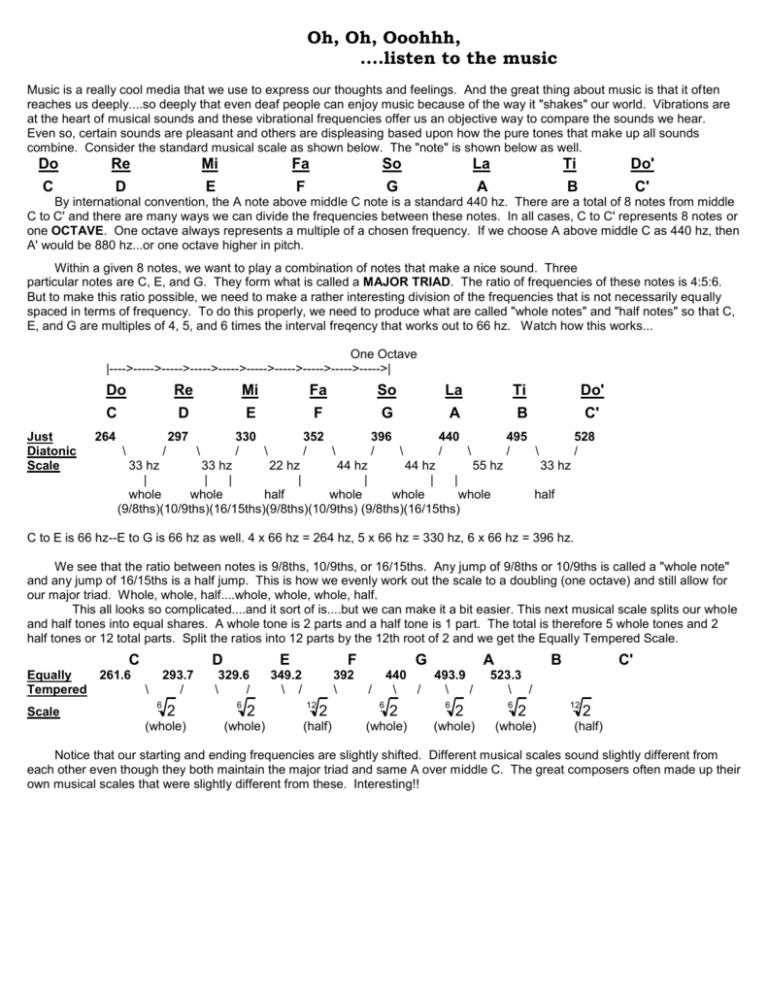
Oh, Oh, Ooohhh, ....listen to the music Music is a really cool media that we use to express our thoughts and feelings. And the great thing about music is that it often reaches us deeply....so deeply that even deaf people can enjoy music because of the way it "shakes" our world. Vibrations are at the heart of musical sounds and these vibrational frequencies offer us an objective way to compare the sounds we hear. Even so, certain sounds are pleasant and others are displeasing based upon how the pure tones that make up all sounds combine. Consider the standard musical scale as shown below. The "note" is shown below as well. Do Re Mi Fa So La Ti Do' C D E F G A B C' By international convention, the A note above middle C note is a standard 440 hz. There are a total of 8 notes from middle C to C' and there are many ways we can divide the frequencies between these notes. In all cases, C to C' represents 8 notes or one OCTAVE. One octave always represents a multiple of a chosen frequency. If we choose A above middle C as 440 hz, then A' would be 880 hz...or one octave higher in pitch. Within a given 8 notes, we want to play a combination of notes that make a nice sound. Three particular notes are C, E, and G. They form what is called a MAJOR TRIAD. The ratio of frequencies of these notes is 4:5:6. But to make this ratio possible, we need to make a rather interesting division of the frequencies that is not necessarily equally spaced in terms of frequency. To do this properly, we need to produce what are called "whole notes" and "half notes" so that C, E, and G are multiples of 4, 5, and 6 times the interval freqency that works out to 66 hz. Watch how this works... One Octave |---->----->----->----->----->----->----->----->----->----->| Do C Just Diatonic Scale Re D 264 297 \ / \ Mi E Fa F So G La A Ti B 330 / \ 352 / \ 396 / \ 440 / \ 495 / \ 33 hz 33 hz 22 hz 44 hz 44 hz 55 hz | | | | | | | whole whole half whole whole whole (9/8ths)(10/9ths)(16/15ths)(9/8ths)(10/9ths) (9/8ths)(16/15ths) Do' C' 528 / 33 hz half C to E is 66 hz--E to G is 66 hz as well. 4 x 66 hz = 264 hz, 5 x 66 hz = 330 hz, 6 x 66 hz = 396 hz. We see that the ratio between notes is 9/8ths, 10/9ths, or 16/15ths. Any jump of 9/8ths or 10/9ths is called a "whole note" and any jump of 16/15ths is a half jump. This is how we evenly work out the scale to a doubling (one octave) and still allow for our major triad. Whole, whole, half....whole, whole, whole, half. This all looks so complicated....and it sort of is....but we can make it a bit easier. This next musical scale splits our whole and half tones into equal shares. A whole tone is 2 parts and a half tone is 1 part. The total is therefore 5 whole tones and 2 half tones or 12 total parts. Split the ratios into 12 parts by the 12th root of 2 and we get the Equally Tempered Scale. C Equally Tempered Scale D 261.6 293.7 / \ 6 2 (whole) E 329.6 \ / 6 2 (whole) F 349.2 \ / 392 \ 12 2 (half) G 440 \ / / 6 2 (whole) A 493.9 \ / 6 2 (whole) B C' 523.3 \ / 6 2 (whole) 12 2 (half) Notice that our starting and ending frequencies are slightly shifted. Different musical scales sound slightly different from each other even though they both maintain the major triad and same A over middle C. The great composers often made up their own musical scales that were slightly different from these. Interesting!!
